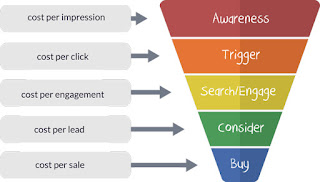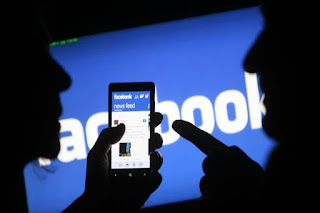What does all of this have to do with social media metrics? On the face of it, nothing much.
But look deeper, and you’ll see that this particular sports story means nothing without being put into historical context. That 76-year wait turned a great win into a momentous one. While you will not have to wait 76 years to see results from your latest social media marketing campaign, your reports also need context if you are to draw conclusions which are useful, interesting and yes, even exciting.
Without context, without a frame of reference, you won’t be able to decipher whether your 150 post comments represent great, average or mediocre engagement. Without context, no raw statistic – whether a sports result or your digital campaign – carries any real weight. So it’s with context in mind that we take a look at three key social media metrics and why they matter for your business.
But look deeper, and you’ll see that this particular sports story means nothing without being put into historical context. That 76-year wait turned a great win into a momentous one. While you will not have to wait 76 years to see results from your latest social media marketing campaign, your reports also need context if you are to draw conclusions which are useful, interesting and yes, even exciting.
Without context, without a frame of reference, you won’t be able to decipher whether your 150 post comments represent great, average or mediocre engagement. Without context, no raw statistic – whether a sports result or your digital campaign – carries any real weight. So it’s with context in mind that we take a look at three key social media metrics and why they matter for your business.
Conversation Rate and Cost Per Engagement
While those 150 comments on one of your posts may look great, this number means very little in isolation. 150 comments on a 500-fan page is excellent, but the larger your following, the more ordinary this same number appears. Instead, comments should be measured by conversation rate, which is the ratio of comments on your post relative to your number of page likes, reflected as a percentage. Similarly, your Cost Per Engagement (available via Facebook analytics), is a good barometer of the number of comments or other actions relative to the amount of money you’ve spent advertising your content.
In each case, you’re putting your results into perspective, allowing you to set realistic targets in the future.
While those 150 comments on one of your posts may look great, this number means very little in isolation. 150 comments on a 500-fan page is excellent, but the larger your following, the more ordinary this same number appears. Instead, comments should be measured by conversation rate, which is the ratio of comments on your post relative to your number of page likes, reflected as a percentage. Similarly, your Cost Per Engagement (available via Facebook analytics), is a good barometer of the number of comments or other actions relative to the amount of money you’ve spent advertising your content.
In each case, you’re putting your results into perspective, allowing you to set realistic targets in the future.
Engagement Rate (based on reach)
For a good few years, marketers and social media managers have paid close attention to engagement. Yet again, “300 engagements” doesn’t mean much on its own. This is where engagement rate comes in – this is a metric that measures the level of engagement that a piece of content has received, reflected as a percentage. The most accurate engagement rate is one based on reach (Total Engagements divided by Total Reach and multiplied by 100). Effectively, you’re calculating the percentage of people who saw your post and chose to engage with it. Engagement Rate makes it easy to compare the performance of different posts, even if those posts had different allocated budgets. It also makes it easy to establish engagement benchmarks for your page, allowing you to set realistic goals for future campaigns.
For a good few years, marketers and social media managers have paid close attention to engagement. Yet again, “300 engagements” doesn’t mean much on its own. This is where engagement rate comes in – this is a metric that measures the level of engagement that a piece of content has received, reflected as a percentage. The most accurate engagement rate is one based on reach (Total Engagements divided by Total Reach and multiplied by 100). Effectively, you’re calculating the percentage of people who saw your post and chose to engage with it. Engagement Rate makes it easy to compare the performance of different posts, even if those posts had different allocated budgets. It also makes it easy to establish engagement benchmarks for your page, allowing you to set realistic goals for future campaigns.
Identify Growth and Engagement Irregularities
This one requires a bit more manual intervention when putting together your report, but your findings will be worth it.
Let’s say you reached 2500 people in February; sure, it may represent a numerical, month-on-month improvement for your business, but what if the bulk of that reach came from just one or two posts? To find out, pop into Facebook analytics and look at your daily growth or total reach graphs, preferably over a period of at least one month. These will show you the peaks and dips in your page’s performance. If you spot an unusually high amount of activity, you can trace this to a specific day or post. In the context – yes, that word again – of your specific business, why do you think the post did so well? Answer as best you can, and try to replicate these lessons in future content.
This one requires a bit more manual intervention when putting together your report, but your findings will be worth it.
Let’s say you reached 2500 people in February; sure, it may represent a numerical, month-on-month improvement for your business, but what if the bulk of that reach came from just one or two posts? To find out, pop into Facebook analytics and look at your daily growth or total reach graphs, preferably over a period of at least one month. These will show you the peaks and dips in your page’s performance. If you spot an unusually high amount of activity, you can trace this to a specific day or post. In the context – yes, that word again – of your specific business, why do you think the post did so well? Answer as best you can, and try to replicate these lessons in future content.

